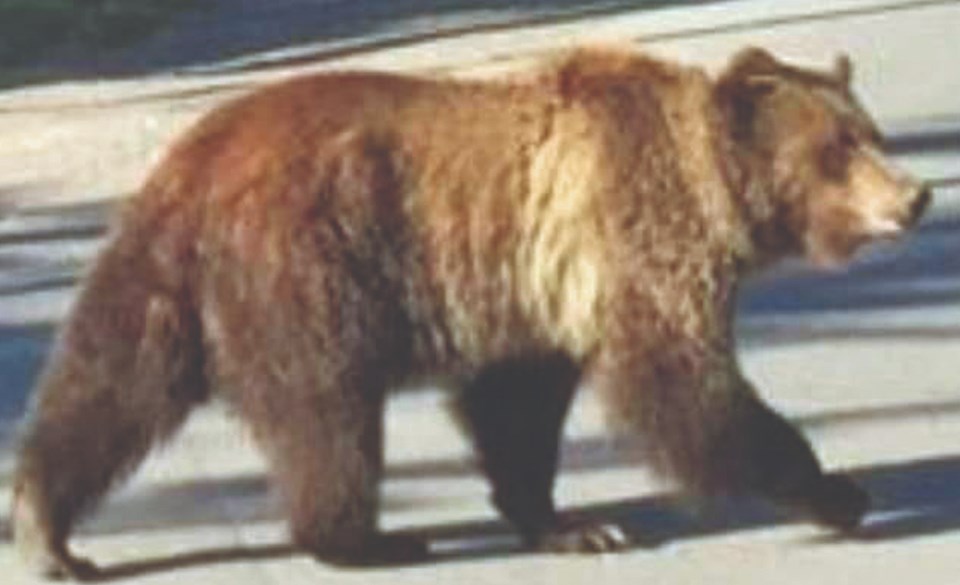One year ago, a grizzly bear was spotted walking around the Whistler Cay neighbourhood, setting off alarm bells for many locals.
While black bears might seem as common as squirrels in Whistler, their larger, shyer relatives certainly are not. However, several factors could contribute to more frequent grizzly sightings in the valley going forward, said Jolene Patrick, who focuses on community coexistence and education with Coast to Cascades Grizzly Bear initiative.
“There’s no reason to panic, but it could be a possibility that grizzly bears are coming into the valley bottom as their population increases,” she said. “Their movements and ranges are going to have to be altered as new [recreational] trails come in. That means they might get more pressure to come to the valleys.
“Also, things like climate change, contributing to a late berry season or no food, they might move into the valleys again [for these reasons].”
The grizzly bear population in Whistler’s region—Garibaldi-Pitt—remains low according to 2018 numbers. The estimated population is just three. However, bordering that region in Squamish-Lillooet, the population is at 46. Just months after the resort’s 2020 encounter, Squamish saw two grizzlies captured in town.
So what should residents do to live peacefully alongside these four-legged creatures?
“We should be very cautious around grizzly bears—and black bears as well,” Patrick said. “They are wild animals. We need to be cautious and wary about that, but we have to have that respect and [find out] why they’re coming into the community. Is it just natural food? That’s fine, they can eat natural food. Conservation will monitor that and they’ll usually return to the mountainside.”
The problem starts to occur when they become attracted to human sources of food. To that end, just as you would for black bears, Patrick said you should ensure your property is free of bear attractants—from bird feeders to barbecues to ripe fruit.
And be sure to call conservation officers if you spot a grizzly in the valley to ensure outreach and education can happen soon after.
One major difference between spotting a grizzly and a black bear on your property? Where you might haze a black bear off with loud noises, you won’t want to try that tactic with a grizzly.
“In the valley, most people might see it from the comfort of their home,” Patrick said. “If it’s munching on grass or casually strolling by, you’re lucky. It’s beautiful. But if you see a grizzly in a residential area call the RAPP line, the Conservation Officer Service. That’s what’s going to help the bear.”
The rules are a little different for backcountry sightings. “If you’re in the wilderness on an alpine trail, hopefully you have your bear spray with you, you’re travelling in groups, you’re making lots of noise to let bears know you’re there,” Patrick said. “We don’t want a surprise encounter. The safest encounter is one you avoid.”
SLRD partners with WildSafe小蓝视频
The Squamish-Lillooet Regional District has partnered with WildSafe小蓝视频 for a second year to help raise awareness about wildlife safety.
The program’s community coordinator, Devin Pawluk, will work through to November on initiatives like door-to-door outreach, garbage tagging, and community presentations on safety and wildlife.
“We are pleased to be able to bring back this important program for a second year,” said SLRD board chair Jen Ford in a release. “We had some great success last year, even with the COVID-19 pandemic, which meant a shift in the way some of the programs are delivered. It will be important to build upon that initial success, and to maintain momentum moving forward, so that we can continue to do the important work of reducing human-wildlife conflict.”
For more follow .

